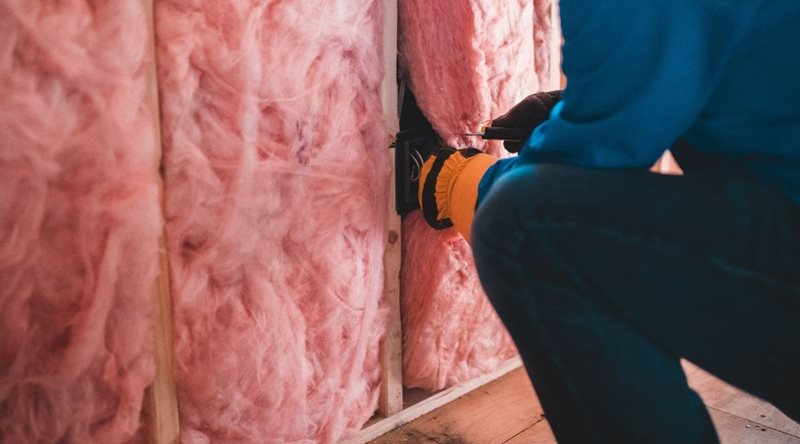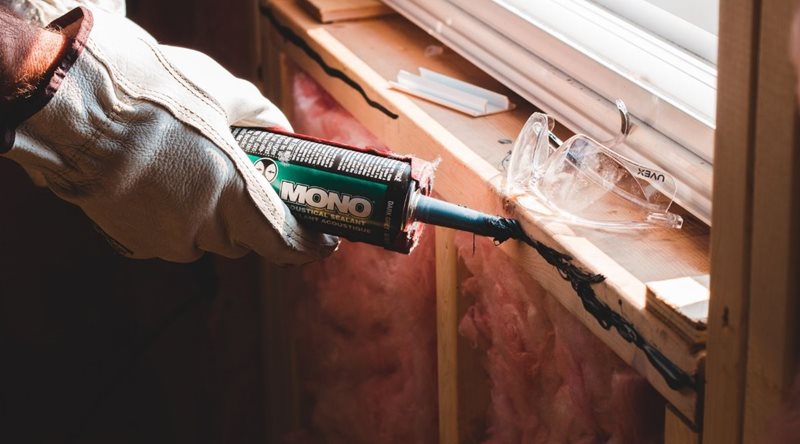The time has come to inject some love and cash into your home. Maybe it’s due for some basic updates and repairs — land and structures do wear down with years of use. Or perhaps your needs and tastes have changed, and your humble abode needs a major overhaul to align with your current life and style.
Either way, it’s an opportunity to make your house into the best, greenest version of itself.
But eco-friendly upgrades can be costly. That’s where green lending can help. In this post, we’ll explore why greening your home is a smart move, what exactly a green loan is, and how your local credit union can help you achieve your sustainability goals.

Why Green Your Home?
There are likely infinite reasons to give your home an environmentally-conscious makeover. Here are some of the most compelling reasons:
- Save money: While many eco-friendly home improvements can be costly investments, they reduce energy bills over time. In the long run, they’ll help you save a lot of money.
- Mitigate climate change: A greener home uses fewer resources, helping to lower your carbon footprint. Planet-loving modifications to your house can reduce resource usage (e.g., use less water and electricity), prevent loss of resources (e.g., keep heat from seeping out through windows), and make better use of the resources you’re consuming (e.g., gray water recycling).
- Live sustainably: Some people just simply hate being wasteful — they find it very appealing to use as few resources as possible and then squeeze every last bit of value out of them. Smart home renovations can be a way to bring a reduce-reuse-recycle mentality into your everyday living spaces.
- Increase resale value: Green homes often sell faster and at a premium compared to traditional properties.
In 2025, rising energy costs and a growing awareness of climate change have made green home improvements more appealing than ever. If you’re considering a green home loan, now is the time to take action.
What Is a Green Loan?
The World Bank defines a green loan as:
“...a form of financing that enables borrowers to use the proceeds to exclusively fund projects that make a substantial contribution to an environmental objective.”
It is a form of financing specifically designed to fund eco-friendly projects. These loans align with sustainability goals, offering homeowners the ability to make environmentally-conscious upgrades to their homes. In a way, green loans are similar to green bonds since they help raise money for environmentally-friendly projects.
Green home loans can be structured as personal loans, home equity lines of credit (HELOC), or specialized lending products aimed at energy-efficient improvements. Common uses include solar panels, energy-efficient appliances, or water-saving systems.

The Difference Between Green Loans and Traditional Loans
As we’ve mentioned, green loans are tailored for eco-friendly projects like solar panels, energy-efficient windows, or water conservation systems. You’ll often need to show that the funds will be used for qualifying green upgrades. Green loans frequently offer lower interest rates, longer repayment terms, and access to tax incentives or rebates, making them an attractive option for sustainability-focused homeowners.
Traditional loans, on the other hand, provide general-purpose financing with fewer restrictions on how the funds are used. While they can still support home renovations, they lack the specific incentives and environmental focus of green loans.
Tax Incentives for Green Home Loans
In addition to long-term savings, homeowners can now benefit from expanded federal and state tax incentives for eco-friendly upgrades in 2025. Programs such as the Federal Solar Investment Tax Credit (ITC) allow homeowners to claim up to 30% of the cost of solar installations on their tax returns. Some states also offer rebates for energy-efficient appliances and weatherization projects.
By combining a green home loan with these incentives, you can reduce upfront costs significantly while making meaningful environmental changes.
How to Use Green Lending
The premise of a green loan for home improvements is to make alterations that result in positive environmental impacts. So, the sky’s practically the limit!
Here are some examples of how homeowners might use green financing to tackle landscaping and structural issues that are harmful (or, at least, not helpful) to the planet:
- Weatherizing with double-paned windows and more insulation
- Installing solar panels and other renewable energy systems
- Implementing a drip irrigation system in the yard and garden
- Switching to a tankless water heater system
- Incorporating recycled or eco-friendly materials in renovations
- Upgrading to Energy Star home appliances
- Installing a smart thermostat
- Upgrading to energy-efficient HVAC systems
These projects not only make your home more sustainable but also create a more comfortable and cost-efficient living space.
How to Get a Green Loan
Every lending institution is different, but you’ll probably follow a similar process as with other personal loans or lines of credit.
First, you’ll want to assess your green project. Identify the eco-friendly upgrades you plan to make. Research materials and installation costs to get a sense of how much you’ll need to borrow.
Next, find the right lender. Many credit unions and financial institutions offer green loans tailored to sustainability projects. Credit unions often have more favorable terms for green lending compared to traditional banks, making them an excellent choice for environmentally-conscious homeowners.
After you find the right lender, there will be an application process. Submit an application along with supporting documents like income verification, cost estimates, and proof of property ownership.
Along with your application and other paperwork, the lender might want to do a personal interview. This is also a great chance for you to ask questions and start angling towards the best possible loan terms and conditions. It’s reasonable to expect that, the more money you’re asking for, the more due diligence the lender will do.
Once approved, you’ll receive the funds to start your project!
Why Finance Green Home Improvements
Any foray into residential renovations can take a sizable bite out of your savings, and making your home eco-friendly can be even more expensive.
For many, there’s no other way to accomplish their desired home improvements without some financial help.
That being said, taking the plunge to renovate your home so that it’s more energy- and water-efficient can be a fiscally sound decision. The long-term payback from implementing environmentally friendly renovations can far outpace the initial expenses, making it a solid investment.

Benefits of Getting an Eco-Friendly Loan from a Credit Union
Credit unions are non-profits that have a mission to support their communities. As such, the concepts of environmental stewardship and backing their members’ efforts to green their homes is a natural fit. When you get a loan or line of credit from a credit union, you can feel confident that they understand your motivations.
On top of sharing this mindset (and the planet Earth), you will come out ahead if you get financing through a credit union instead of a regular bank. For example, at Valley Credit Union, you’ll enjoy:
Valley Credit Union — Your Evergreen Source for Green Financing
VCU’s always here for you. When you’re ready to make your dream home even dreamier and more sustainable — and are trying to figure out how to make it happen — our knowledgeable staff can help. We offer a variety of banking and loan products, as well as services and resources, to move your green home improvement project from idea to implementation.
Don’t hesitate to contact us today to discuss your needs!
About the Author

 Katie Clark, Director of Administrative Services
Katie Clark, Director of Administrative Services
Katie Clark has been at Valley Credit Union since 2011. She serves as the Board Secretary and oversees Human Resources, Marketing and Facilities for the credit union, some even call her the credit union mom. As a CUNA and GoWest HR council member she stays connected with the latest industry happenings. When she’s not in the office she enjoys weekends with family & drinking wine at the Oregon coast.